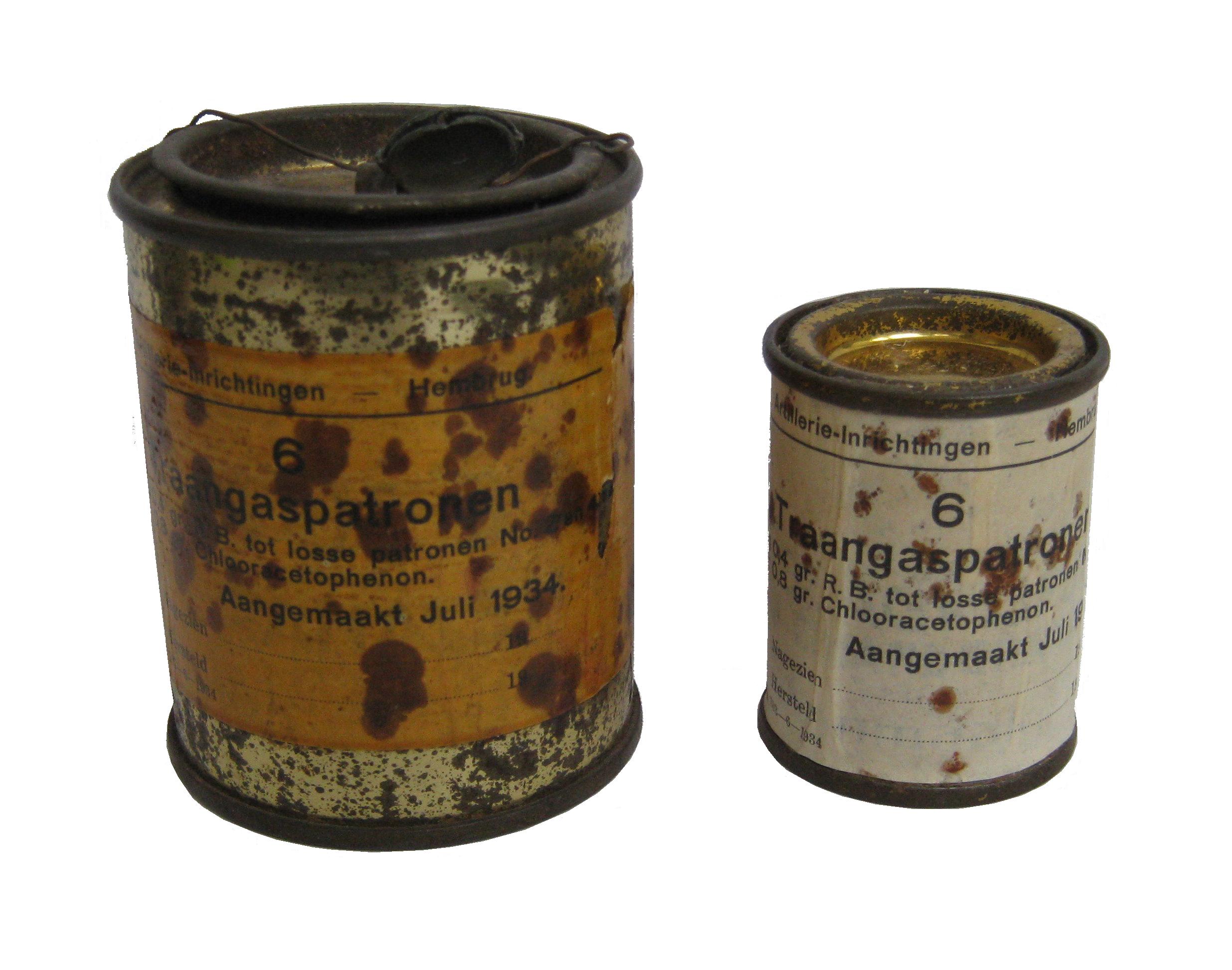9.4mm Dutch Revolver Cartridge :
![]()
Introduction:
In 1873 the Dutch army adopted the M.73 revolver for service together with the 9.4mm revolver cartridge.


M.73 revolver old model (left) and M.73 new model (right) (former Visser collection)
Ball cartridge:
The ball cartridge was officially called the ball cartridge nr.11 (scherpe patroon nr.11)
The 9.4mm cartridge case was made of brass with a rim and had a total length of 21mm. Both straight and bottlenecked cases were produced. The case had no headstamp. The bullet was round nosed and made of lead.


The ball cartridge nr.11 was packed with 12 rounds in a brown carton box. Information was printed on the label in black, referring to the cartridge numeral, the production year and manufacturer.
Box Ball nr.11 from 1889 produced bij the cartridgefactory P. "P. = Patroonfabriek Delft"
In 1897 the cartridge nr.11 was renamed into cartridge nr.5. The cartridge nr.5 was packed with 6 rounds in brown paper closed with a pink ribbon.
6 cartridges ball nr.5 (S=Scherp) produced by the "Patroon Fabriek" in 1909
In the early twenties several batches of cartridges nr.5 were purchased from abroad. These cartridges were ordered with a headstamp on the base. They were marked with the production year of the case at 12 o'clock and the factory code at 6 o'clock. Most of the time the cases were delivered empty, and the cartridges were assembled at the Artillerie Inrichtingen (Hembrug).
Here are some examples of the variation in headstamps and their associated manufacturers...

S = "Solothurn"
B = "Birmingham"



D = "Durlach"
Blank cartridge:
The blank cartridge was approved for service for the cavalry to exercise with the horses so they could become familiar with the sound of gunfire. The blank cartridge was also used to practice with the troops in the field.
The blank cartridge used the same cartridge case as the ball cartridge. The bullet was made of paper, filled with sawdust and dipped in the varnish.
the blank cartridge was loaded with 1.25 grams of blackpowder nr.2.

Blank cartridge (with headstamp 29 S)
Tear gas cartridge:
The army used tear gas for excercise purposes to learn soldiers to use their "gas" equipment. For this goal a tear gas cartridge was developed. The military police was also interested in the tear gas cartridge to use for riot control.
The teargas cartridge had an extended case of 32mm. The cartridge had no bullet. It was loaded with 0.4 grams of smokeless gunpowder. above this gunpowder, 0.8 grams of Chlooracetophenon was loaded in the case, closed with red collored wax.
The tear gas cartridge was packed with 6 cartridges (sometimes 5) in a small tin can. This tin can was packed in a second tin can to ensure airtightness.


Tin(s) for 6 tear gas cartridges, the teargas cartridge with its headstamp. (only 33)
The tear gas cartridge was fired from a modified M.73 revolver with the barrel for the most part removed.

Tear gas revolver (former Visser collection)
Instruction cartridge (lespatroon)
For instruction (at military schools), dummy cartridges were introduced into service. These instruction dummy cartridges looked exactly the same as the ball cartridge nr.5 but were marked with a red primer annulus. The instruction dummy cartridge was filled with sand to achieve the same total weight compared to the ball round. The instruction dummy was packed with 6 cartridges in a brown paper with the information "onschadelijk"(= harmless) written on it.


Instruction cartridge (no headstamp)
this page is under construction.....
![]()